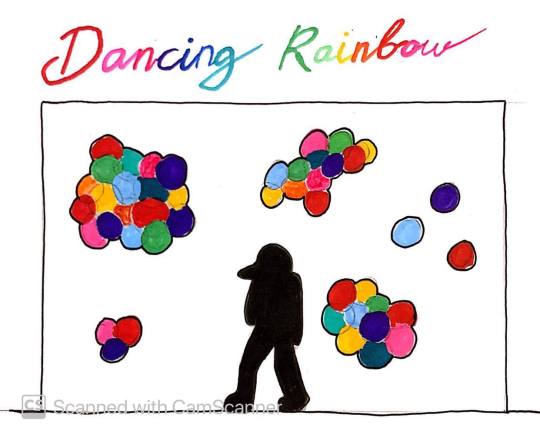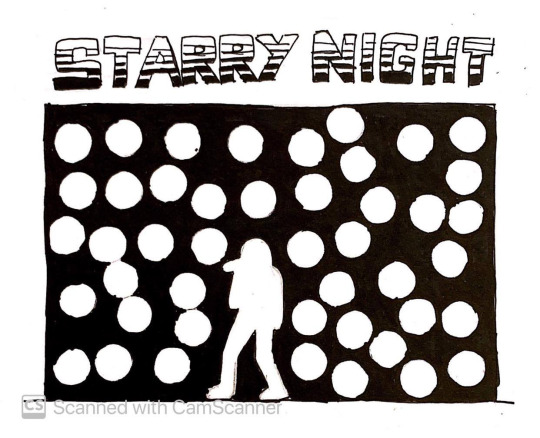Josh O'Rourke n9936874 Bachelor of Design (IVD) Research Studio Project Process Week Zero - Week One - Week Two - Week Three Week Four - Week Five - Week Six - Week Seven Week Eight - Week Nine - Week Ten
Don't wanna be here? Send us removal request.
Text
The Code
As discussed in the last blog post i was deciding on if i was going to use TouchDesigner, a coding program that i haven't used before but is a more visual based program that focuses on interaction, and Processing 3 one i have used before that is more of a general coding software but does have some limitations to interaction mostly based on computer performance. I discussed this with my tutors and decided that as it would be good to learn a new software it could be timely and that is something i don’t really have up my sleeve at the moment. I have a general understanding of Processing and an idea of how i can create prototypes of the project however it will still take some time as i will need to work through some tutorials and use some friends as further more specific help when needed.
As i am now doing the coding in Processing i’ve deiced to break the code down into two sections, the Action and the Reaction. This is to make it easier on what to focus on when coding and ill combine them when they are both complete

Sketch of how the supposed space of the performance will look in terms of the program.
Action
The action section refers to the action that the program picks up, in terms of the project this will be the crowd movement throughout the performance. The way i imagine this working will be with the use of a webcam (this may need to be purchased as a decent quality one will be needed), the webcam will watch over the crowd and the program will detect movement based of the the differences between each frame. When movement is detected it will grab the coordinates of where this is and send it to the reaction side of the code.
Reaction
The reaction side will correlate these coordinates to the projection behind the performer and place an action there. For the project (at this point) this will be circles, from there the concept is simple, the more movement within the crowded the more circles will be placed giving the crowd control of an aspect within the performance as their are the once controlling the visuals with their movement (most likely, their dancing).
The start of Coding
I decided to start with the reaction side of the coding as it was easier meaning it wouldn’t take too much time to create. For this i started with 2 different sketches, both using the idea of circles being place where movement will be detected however, for right now there is no movement so i decided to have both a random sketch that give more of an idea of what it would look like with the performance and a controlled sketch to show that these can be placed within chosen coordinates.

Random Sketch

Controlled Sketch
The random sketch is how i believe the performance will look as there will be more movement throughout the performance, however i believe these circles will also be clumped up with people dancing together, typically in a crowd there is also more moment toward the front of the performance.
The controlled sketch is more to show that reaction side of the code can place these circles in specific coordinates, in this case it is where ever the mouse goes within the sketch.
Next to work on is the Action side of the code, once this is done i can start user testing the interaction of the project. This may lead to some informal group user testing ti see how well the program follows with multiple people.
0 notes
Text
Week 2 the Meeting
I had an interview with the performer for Boom Boom Clap, Aerborn! I spoke to her about changes in plans within the project due to COVID and uni restrictions. I spoke to her about ideas on how to get around not having an actual performance at the design exhibition at the end of year so as a substitute I will be having a small performance at my house. It’s big enough to have a reasonable amount of people to show how the project works as a slice of its potential for an actual large scale performance. We also made a rough idea on when this was going to happen, it needs to be late enough in the semester to have it actually done with enough time to edit a video to show and describe how it works.
She also went on to show me some of her newer songs that have potential to have for the performance.

Touch designer
As for programming software, I was given the tip by Riley to look into TOUCH DESIGNER. It looks to be more of a designer/ visual based programming software.
I have to think about if it is worth starting with a new programming software and learn form scratch. It could be worth it as it looks to be more interactive than processing, but it also looks hard to get my head around with without having someone to go to for questions on how to to do things.
0 notes
Text
Week Zero // The Project so Far...
Boom Boom Clap is live interactive performative project that aims to connect Performer and Audience within a live musical setting. It aims to use playful interactive design to enhance this, connection blurring the line between these two groups giving a live performance a unique experience with every show.
It draws from the the principles of play within interaction art, the pleasures of play and, the idea of witting engagement. It also draw inspiration from works in the likeness of, Planets, by Andy Bates and Michael Smith (2014), Soundline, by AEFA@QUT (Ars Electronica Futurelab Academy at the Queensland University of Technology) (2018) and, 7Bit Hero (2012). These are the high tear benchmark projects that Boom-Boom-Clap aims to be like.
The Experience so Far..
For now only sketches have been drawn up of how this experience will take shape, these each use different inspirations so they manifest in different ways. They are; Body Hero, CopyCat, Dancing Hero, and Starry Night. The concepts all revolve around the audience interacting with the visual aspect of the performance as the performer involved wants to safe guard the music within the performance so they can perform their whole song.
Body Hero

Body hero uses the same general idea from Queen’s We Will Rock You using the audience to create percussion sounds using their bodies but adds a visual element. It takes inspiration from Guitar Hero by having the ‘notes’ fall from the top of a screen until it hits the ‘target zone’, this is where the audience will hit the corresponding percussion that the notes symbolize, these being icons in the form of emojis.
Copy Cat

Copy Cat uses the same idea as Just Dance by having the audience follow along to the choreography that is performed by the performer. It uses visuals behind her to help the audience keep up and get the general idea of what move she will be doing next. The moves are represented by a silhouette of that move and the audience will try and copy the general stance of that move. These moves will move from right to left, and when the ‘move’ hits the specified area that is when the move is performed by the performer.
Dancing Rainbow

Dancing Rainbow uses movement mapping/ motion tracking to track the movement of the audience, when it detects enough movement then it will place a random coloured circle in that place. When lots of movement is detected it will do this multiple times and this will then most likely create clumps of colour as the visuals for the performance. The idea that the audience can see that the movement they are doing is affecting the visuals encourages more movement and dance to the performance.
Starry Night

Starry Night takes more inspiration from the likes of 7Bit Hero and its use of a backchannel to interact with the visuals. The idea is to have the audience tap on their phone to the beat of the song then that is relayed to the visuals. The audience would then see a circle pulse to their tapping, with each person having a different circle. The hope is that everyone’s circle pulses to beat of the music with room for some people to be offbeat showing that they are the ones in control of the circles, encouraging further tapping.
1 note
·
View note